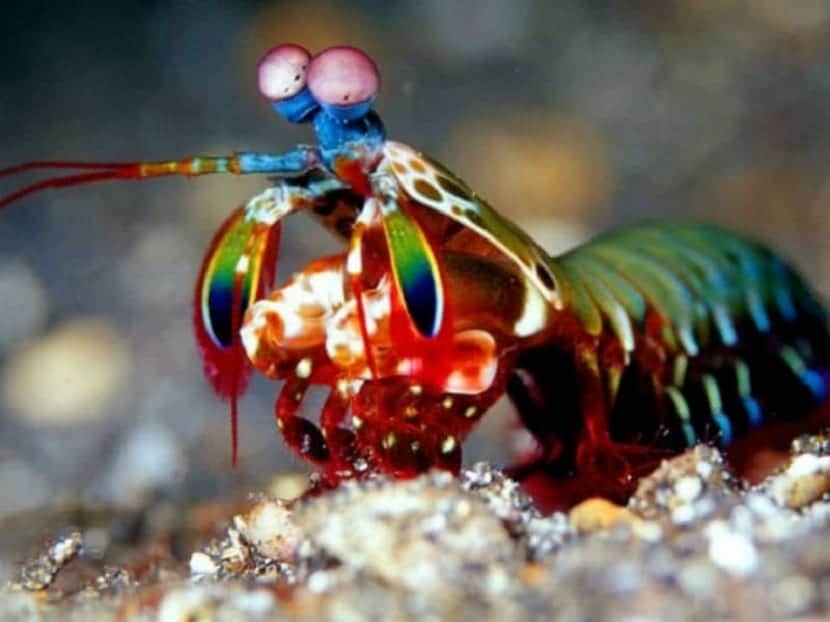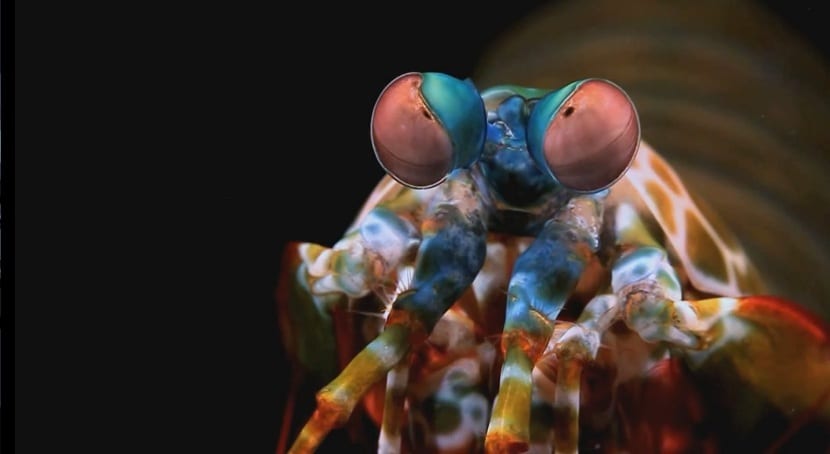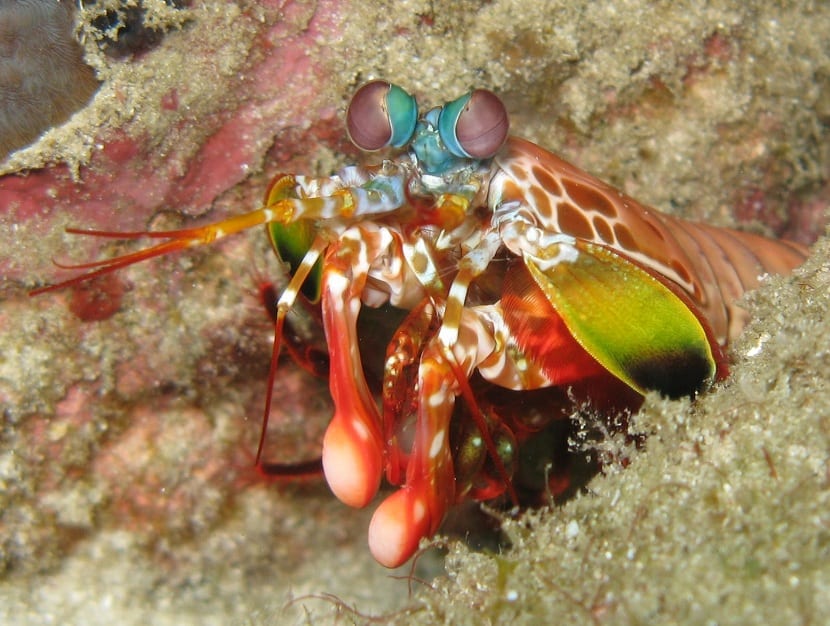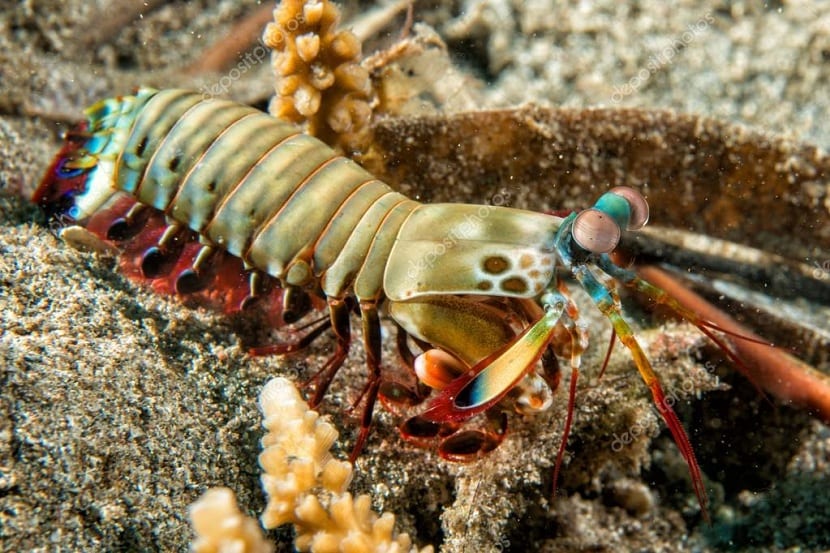
One of the most curious crustaceans that deserves your attention is the mantis lobster. Therefore, we are going to dedicate this article to this animal. It is a crustacean that belongs to the order of the Malacostráceos. It is also known by other common names such as galleys, lobsters, sea mantises, shears, and tamarutacas. They are known around the world for being characteristic and curious because they bear the same name as the praying mantis insect. He also possesses a similar aggressive behavior that has caused him to be called by that name.
In this article you will learn everything about the mantis lobster. We will explain it to you in detail.
Key features

It is a crustacean whose name It derives from the insect known as the praying mantis. One of the main similarities it has with this insect is the raptor-like hind limbs. In addition, it has a high capacity to blend in with the environment that surrounds it, so its survival instinct is quite high.
They can appreciate polarizing light and react to it. Among the most notable features are his huge protruding eyes. We find it with different sizes ranging between 30 and 38 centimeters. With that size and this horrifying appearance, we are talking about an animal quite feared by those around it.
It has a shell that also covers its head in addition to the first 8 segments that the thorax has. Thanks to this shell it can be covered with bites, blows and some accidents that it may have. The coloration differs from its other relatives such as the royal lobster and the blue one, in that it is very varied. We met with different types of colors ranging from red, orange, green, purple, blue, brown, white and ocher. All of these colors are fundamentally eye-catching.
Well, despite having these striking colors, it has a high capacity to blend in with the environment. The female specimens are usually paler than the males. It is a fairly clear way of being able to differentiate them. The younger mantis lobster may have the yellowest colors rather than the more typical green ones. All these traits are differentiators between individuals when it comes to studying them in depth.
Behavior

Its life expectancy is quite long since it has a very good ability to survive in different environments. They are usually quite aggressive. Because of this behavior they are called boxers since they are able to use their claws to make fast and violent attacks. They are predatory animals. They have great hunting capacity and habitually consume their prey in a voracious and fast way.
Its behavior is so aggressive that some specimens have been able to break the glass of an aquarium with a single blow. This extraordinary force shines through and is seen with more impetus when the animal feels cornered or in danger. In this case, the fact of having crystals as walls makes him want to be free and he hits with all his might.
Despite their great aggressiveness, they are little known animals in the habitats where they live. They tend to spend most of their lives in burrows and holes, unnoticed. Being solitary, they simply dedicate themselves to being hidden and safe waiting for prey to pass near their lair. When this happens, they execute quick and violent attacks that help them get the food they want. The mantis lobster has a diurnal, nocturnal and twilight behavior. There is no one time of day when they are more active than another.
Its complex behavior makes it have various fights with other males of the same species. They are ritual type fights that are part of a more strange social behavior. This behavior derives from the need to defend the territory against certain rivals that they consider dangerous. It is simply a way to defend what is yours.
Curiosities of the mantis lobster

They are animals with a good memory. If they are always lurking in their burrows waiting for prey to be captured, they are able to remember neighboring individuals. Some specimens can remember other individuals by the particular scent.
Some of the mantis lobster species can use fluorescent patterns on their bodies to signal their own species and others nearby. This serves to be able to expand the area of distribution where it distributes the behavioral signals.
Its peculiar way of moving makes it a rather curious animal. It uses its hind legs to gain momentum. Once you have enough momentum, you roll to the zone you want to go. With this method of movement, they can travel distances of up to two meters with each impulse. The most common is that they give more continuous impulses, covering distances of half a meter. The strongest impulses make you require too much energy and use it in special situations.
Distribution, feeding and reproduction

Almost all species of mantis lobster make their home in the tropical and subtropical seas since they need milder temperatures. There is great abundance in the Caribbean Sea and in the Indian and Pacific Oceans.
Regarding their diet, they are known as very voracious predators with aggressive behavior. This leads them to have a very varied diet based on different fish, mollusks and other crustaceans. Some individuals may even experience cannibalism.
When the mantis lobster is mating, its shell has an active fluorescence. This indicator lets males know when to act. Females are fertile when they go through certain phases of the tidal cycle. This serves to avoid the loss of energy due to the effort of going against the tides.
They can have between 20 and 30 episodes of offspring during their entire life. Depending on each individual, you can have totally habits for the care of the young and the relationship between the couple. In this regard, it does not refer to the insect, since after the sexual act, the female mantis does not eat her partner.
I hope that with this information you can learn more about the mantis lobster.